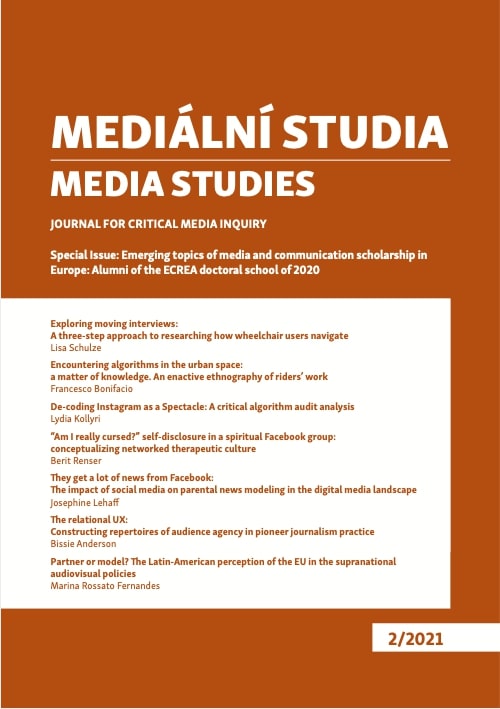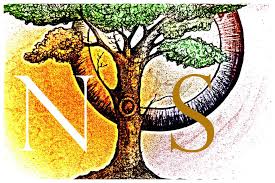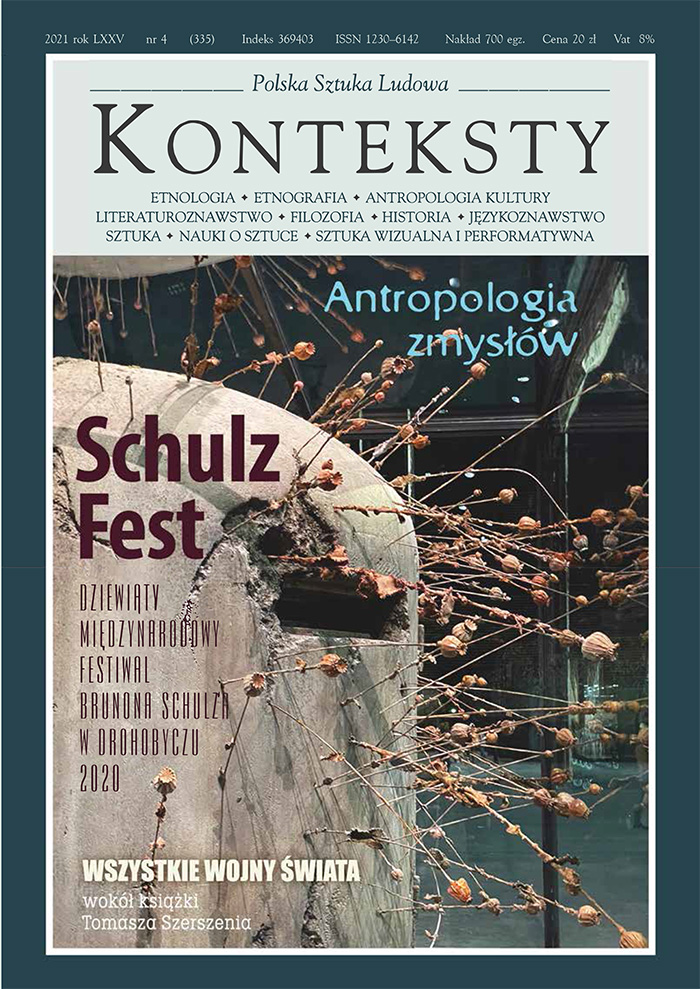
We kindly inform you that, as long as the subject affiliation of our 300.000+ articles is in progress, you might get unsufficient or no results on your third level or second level search. In this case, please broaden your search criteria.


Navigating and following a route is a regular practice for many people. However, how do people who use a wheelchair plan and follow routes? To answer this question, a three-step process of data collection was used: online interviews, moving interviews and reflection interviews. By drawing on my experiences with five participants, this article argues that conducting moving interviews with wheelchair users is a useful method for studying mediated communication in urban spaces and reflects upon the challenges and opportunities this three-step method holds.
More...
In 2016 Instagram integrated personalization algorithms into its system, promising to show the moments they believe we will care about the most. The platform's personalization logic and its commercial nature raise concerns regarding the emergence of filter bubbles and "individual realities", privileging topics that reflect a firm market logic and represent a reality where capitalism dominates. The present study aims to investigate the existence of a filter bubble on Instagram, posing the following questions: Do filter bubbles exist on Instagram? Do Instagram algorithms favor commercial soft topics? The study employs the algorithm auditing method, impersonating a user interested in soft-topics and another one involved in public-oriented topics by creating fake accounts. Both accounts' recommenda- tions were collected and analyzed qualitatively. The analysis shows that Instagram algorithms render certain topics much more salient, generating a filter bubble of soft topics that closely resembles what Debord introduced as Spectacle.
More...
This article investigates the therapeutic culture in social media and looks at a Facebook group for spiritually inclined people who seek solutions and remedies to their daily worries and troubles. This study is based on discourse analysis of 498 posts, combined with ethno- graphic observation and interviews. To understand how the therapeutic culture is shaped in social media, I analyse the motives and experiences of people who self-disclose in the group, the discursive framing of problems by both help-seekers and advice-givers, and the progress of self-disclosure. I propose the term networked therapeutic culture to describe the dialogic and interactive therapeutic culture that has emerged on social media and can be characterised by, first, the more accessible platform for speaking out, second, its shaping of the therapeutic discourses and third, how it affords accumulating self-disclosure in return for help.
More...
The popularization of digital technologies has called into question the role of parent-child behavior modeling in news socialization in the modern media landscape. On these technologies, news coexists with many other types of content, rendering its use externally invisible and thus less available for imitation with potential consequences for younger generations’ future news use and civic orientation. This article reports on the everyday news behaviors of a quota sample of 24 Danes between ages 18 and 25 based on a combined qualitative methodology. An analytical design using laughter as index of face-loss points to sources of embarrassment in interview subjects’ news repertoires, uncovering a young audience that is aware of but uncomfortable with their parents’ news habits. This is in part a result of social media, where parents’ liking, commenting, and sharing behaviors simultaneously make their news practices more available for observation and less available for idealization.
More...
This article examines how “pioneer journalists” (Hepp & Loosen, 2020) in legacy newsrooms create preferred audience experiences through their UX practices in a networked media ecosystem where journalism’s epistemic authority is increasingly contested. Grounded in the encoding/decoding paradigm (Hall, 1973, 1980), this study combines semi-structured inter- views with 12 journalism pioneers in London-based legacy newsrooms, with the in-depth analysis of the multimodal/interactivity features of two example stories. The findings suggest that audiences are interpellated through the construction of various repertoires of agency, grounded in empathy, for a closer, more immediate, and active involvement in the story. By creating ‘relational UXs’ that try to control the travel of meanings and the pro-duction of emotions, pioneers in legacy news organisations place a stronger emphasis on the relational renegotiation of epistemic authority, a strategy to simultaneously embrace active audiences and sustain journalism’s traditional raison d’etre – making sense of the world for the public.
More...
The EU has a strong influence on the development of audiovisual policies in Latin America. The paper investigates how the EU is perceived by Latin-American audiovisual institutions in two different supranational regions: Mercosur and Ibero-America. The findings are based on a literature review, qualitative document analysis, and semi-structured expert inter- views. It reveals a lack of definition of the EU image where RECAM did not concretely define the EU and engaged in a blind policy transfer process, while Ibermedia perceives the EU as a strategic partner and seeks cooperation with mutual benefits. The paper provides a deeper understanding of what the EU model means to Latin America, going beyond its institu- tional framework, and proposes a reflection on the EU perception and how it could lead to different forms of dialogue.
More...
Cel. Celem niniejszego artykułu jest przedstawienie postaw studentów wobec osób z niepełnosprawnością ruchową oraz z niepełnosprawnością intelektualną. W opracowaniu omówiono istotę, komponenty i mechanizmy kształtowania postaw, a także dokonano przeglądu badań dotyczących przekonań wobec osób z niepełnosprawnością ruchową oraz intelektualną.Metodologia. W badaniach wykorzystano metodę sondażu diagnostycznego oraz technikę ankietyAnaliza materiału poparta jest danymi, które uzyskano od 70 respondentów.Wyniki. Studenci przyjmują negatywne postawy wobec osób z niepełnosprawnością ruchową oraz z niepełnosprawnością intelektualną w komponencie poznawczym, natomiast w komponencie afektywnym oraz behawioralnym postawa ankietowanych była zależna od rodzaju niepełnosprawności. Badania ukazały dystans studentów wobec osób z niepełnosprawnością intelektualną. Uczestnicy badania deklarowali większą otwartość i chęć interakcji z ludźmi z niepełnosprawnością ruchową oraz w mniejszym stopniu – z niepełnosprawnością intelektualną. Interpretacja wyników badań umożliwiła zaproponowanie rekomendacji pod kątem zmiany przekonań studentów wobec osób z niepełnosprawnością.Wnioski. Osoby niepełnosprawne mają pozytywny wizerunek wśród studentów. Jednakże respondenci wykazują negatywną postawę w komponencie poznawczym. Badani posługują się nieaktualną terminologią, często o charakterze pejoratywnym. O pozytywnej postawie badanych w komponencie afektywnym oraz behawioralnym świadczy przyjazne nastawienie wobec osób niepełnosprawnych, a także chęć udzielenia tej grupie wsparcia.
More...
The author describes the founders of the anthropology of the senses, which, according to her interpretation, constitutes a research basis enabling to comprehend assorted ways of creating and transmitting cultural values (in diverse societies and historical epochs). The text describes consecutively the premises of research into the senses, conceptual obstacles, and precursory studies and the directions of their development.
More...
The author ponders on differences between the organisation of the sensorium – defined as a sensory apparatus functioning as a complex operational system impacted by culture and, at the same time, one that creates culture. A presentation of diverse meanings ascribed to particular senses in different societies and of heretofore pertinent research, which makes it possible to define culture as an entity in all of its aspects.
More...
A reflection on “sensible community”, with the author first discussing political / sensible dichotomies, i.a. that what is rational, common, and pertaining to all, as well subjective, affective, and unique – so as to subsequently acknowledge the impossibility of separating those two categories. In his opinion, sensibility does not exist in itself but constitutes group activity, while sensible experience is that of collective life.
More...
A proposal for a new conceptualisation of sensual experience, with the author suggesting the term: “interception” as part of a critique of “perception” dominated by dichotomies and assuming an absorption model of experience. Next, he describes the instrumental approach to senses existing in the humanities and enrooted in reflections favouring a production of the repeatable and constant experience that constitutes the foundation of knowledge. Within a departure from this conception Topolski resorts to the concept of the “medium” conceived not as something that mediates between the world and the sensual body, but as something that defines the location of the subject, placing it between the senses and subjects (human and non-human) and referring to its mobility and interactiveness.
More...
The author embarks upon reflections dealing with the intersubjective dimension of the sense of taste and considers education as well as the globalisation and migration of taste or sensual memory. Taste is not exclusively experienced in the body but also shared with the world. The author stresses that with this meaning in mind we should speak about two processes: the externalisation of taste by culture and the internalisation of cultural taste preferences. Both this particular sense and tasting thus appear as culturally mediated and always take place in a given geographical, political, and historical context.
More...
The presented interview pertains to sensory anthropology: desire connected with the changing hierarchy of senses (in Western culture), the absence of tactile anthropology, the creation of new types of knowledge (e.g. via dance, exhibitions, multisensory projects) or the attachment of academia to the written word. The conversation ends with a reflection on the future of research focused on the senses, including the development of a language capable of describing new sensory experiences.
More...
This interview, dedicated to the multidisciplinary work performed by a senselier, deals with numerous questions concerning the sense of smell: sensory education, sensory racism, olfactory art or the possible emergence of a universal sensory language.
More...
At attempt at presenting the contents and material dimensions of children’s drawings used by Karol Radziszewski for The Power of Secrets exhibition featured at the Ujazdowski Castle Center for Contemporary Art in 2019 and 2020. The article poses a question about the category of truth conceived as an implicit effect of the autobiographical gesture and the character of material “proof” that is supposed to testify about that truth. By referring to L’Âge d’Homme by Michel Leiris oraz Denis Hollier’s The Holofernes Headline (Notes about Judith), commenting on the latter, the author of the article attempts to show the convention of the Radziszewski exhibits, which she treats more as a staging than a revelation, a question rather than an answer, and a depiction of a rupture of the subject rather than a manifestation of cohesion. At the same time, Katarzyna Przyłuska-Urbanowicz proposes a new and wider comprehension of the concept of “queering” biography: a quest for precisely that, which remains strange and incomprehensible within us and which belies domesticated identity and the consistent narration spun about it.
More...
The author of the article discusses Peter Liechti’s documentary film The Sound of Insects – Record of a Mummy (2009), confronting it with the animal fairy tale genre: not human figures, antagonistic relationship, indefinite time, forest space. The director who radically experiments with the animal fairy tale convention, speaks on the subject of human condition and death. The hero of the film is a contemporary “incarnation” of Harry Haller, a steppe wolf who beliefs that he is incompatible with the world.
More...
The article begins with generalized remarks on anthropological film and its relation to the mainstream anthropology as a scientific discipline as well as its entanglement in the dominant discourses and modes of narrating. These observations become a backdrop for more detailed considerations on the process of constructing (creating) narrative in my own film on the mediating role of filmmakers, filming and photographing in a contemporary Polish wedding (K. Dudek and S. Sikora, Making it interesting… On mediatization of wedding rituals, University of Warsaw 2009, 73’). The author refers to the film to explain complex ethical issues connected with collaboration, filming and creating meanings through juxtapositions (cf. J. Clifford).
More...
The article analyzes the juxtapositions of the photography of the Warsaw ghetto boy with the pictures of suffering animals. Although not mentioned by Frédéric Rousseau in his study of the iconic journey of photographs, they seem crucial as they reveal the differend of the ethical strategies which the new humanities use as tools of historical justice. One of them universalizes the Holocaust victims to erase the boundary between a human and an animal victim, demanding the memory of the latter. The other separates people and the non-human beings to restore humanity to the genocide victims. Thus, both turns to violence, either removing the boundary between humans and animals or by emphasizing it.
More...
With the album Słownik polsko-polski by Wojciech Wilczyk (published in 2020) as her point of departure the author examined selected manifestations of the phenomenon of new Polish patriotism, which for more than a decade has been solidifying into a distinctive cultural formation operating with a language (also visual) of its own, as well as possessing patrons and a characteristic set of references and symbols. Apparently, reflections by Marcin Napiórkowski on turbo-patriotism and interpretations proposed by Andrzej Leder prove to be of use in the case of a description of this phenomenon and its origin and make it possible to perceive in Wilczyk’s most recent album a continuation of motifs present in many earlier projects by this artist.
More...